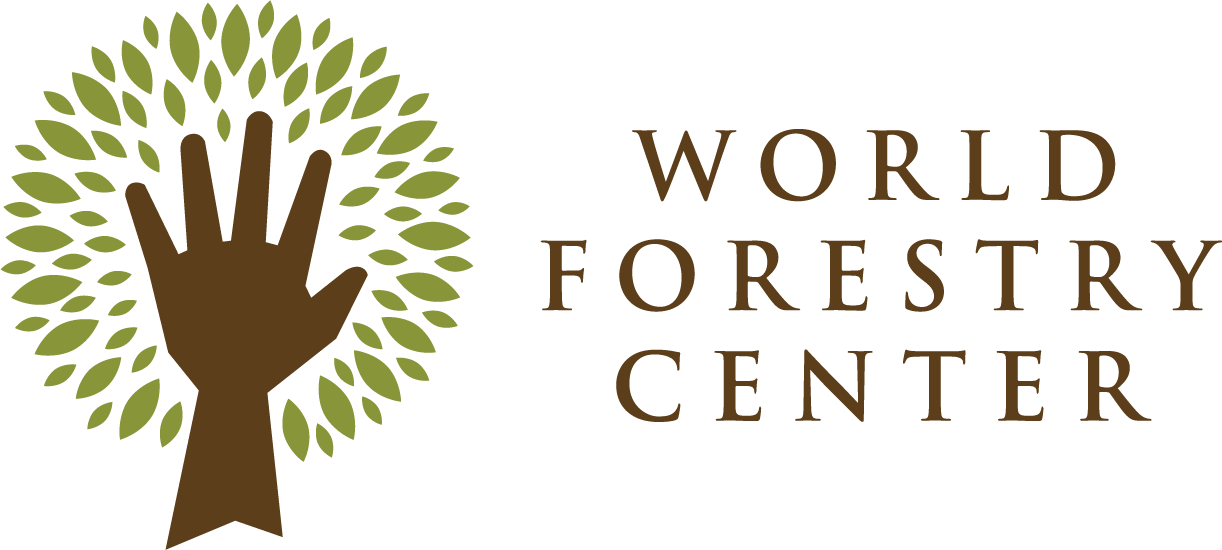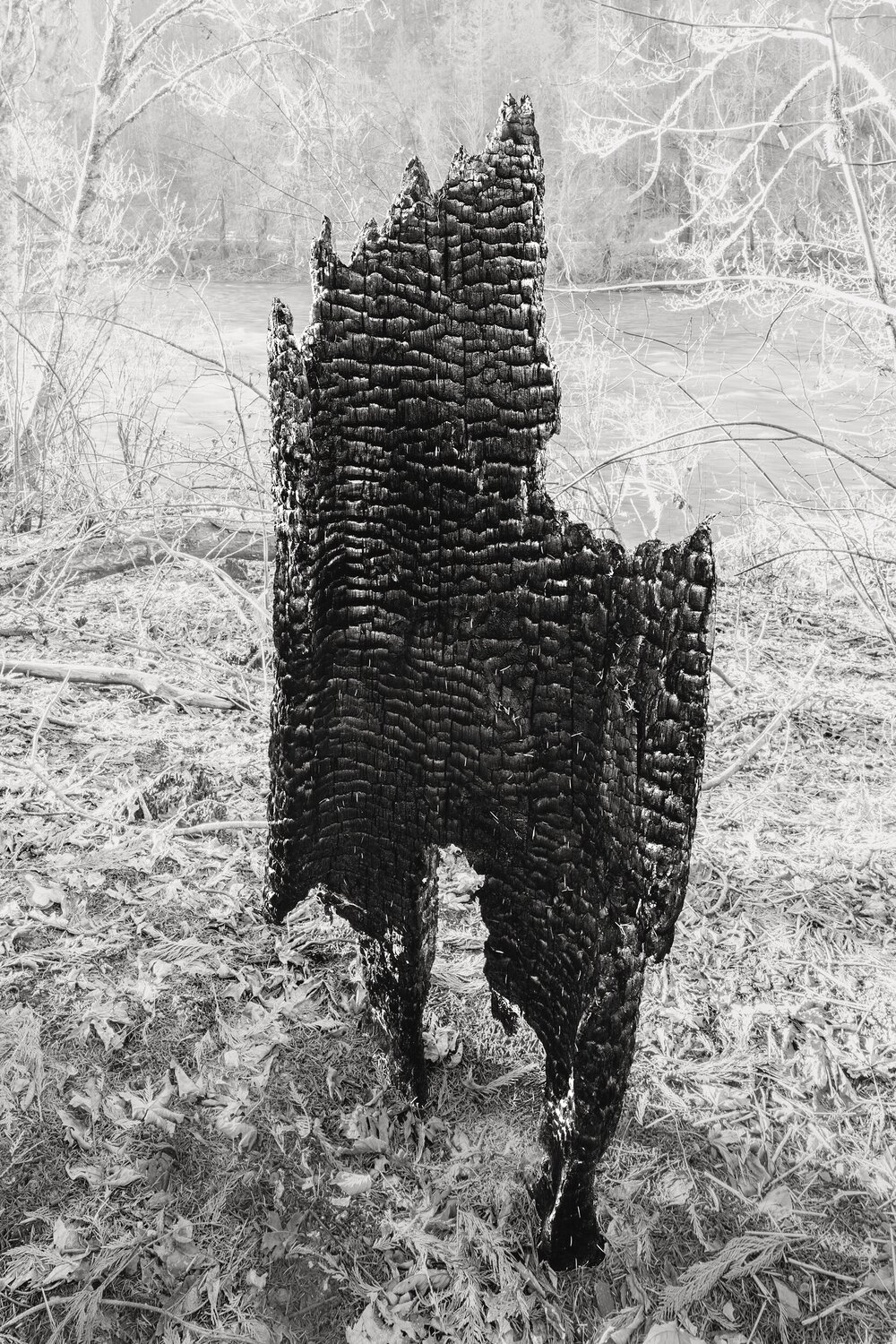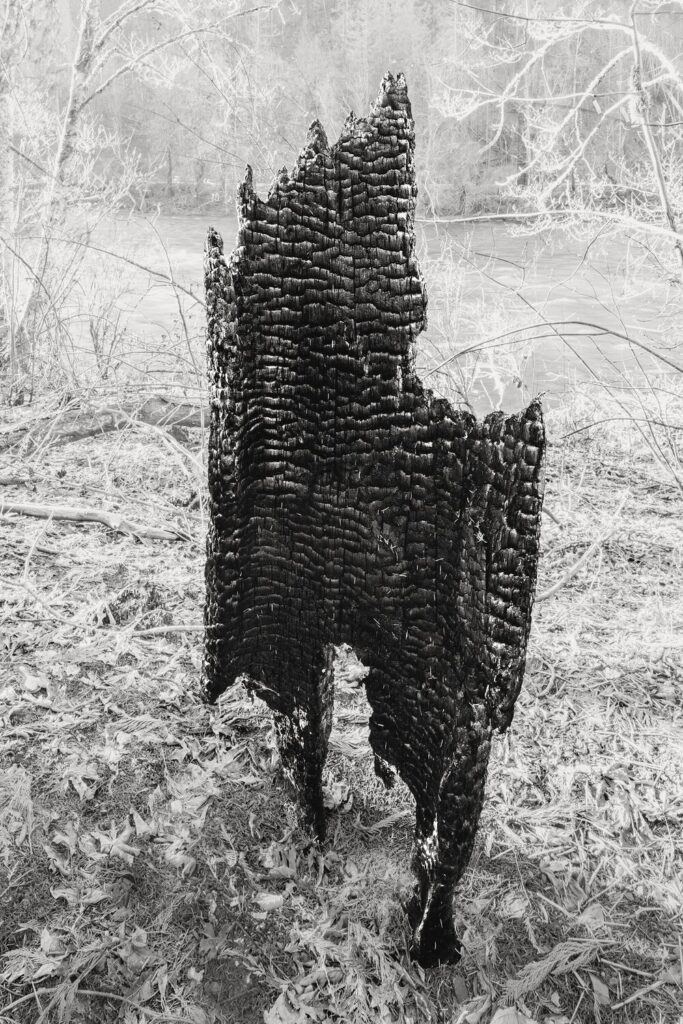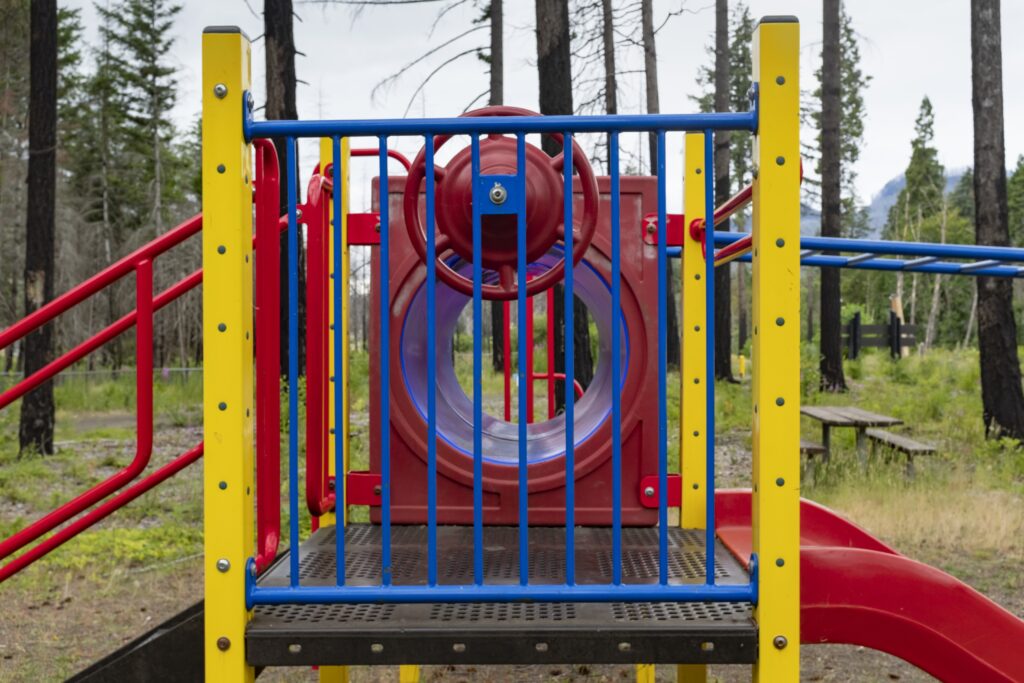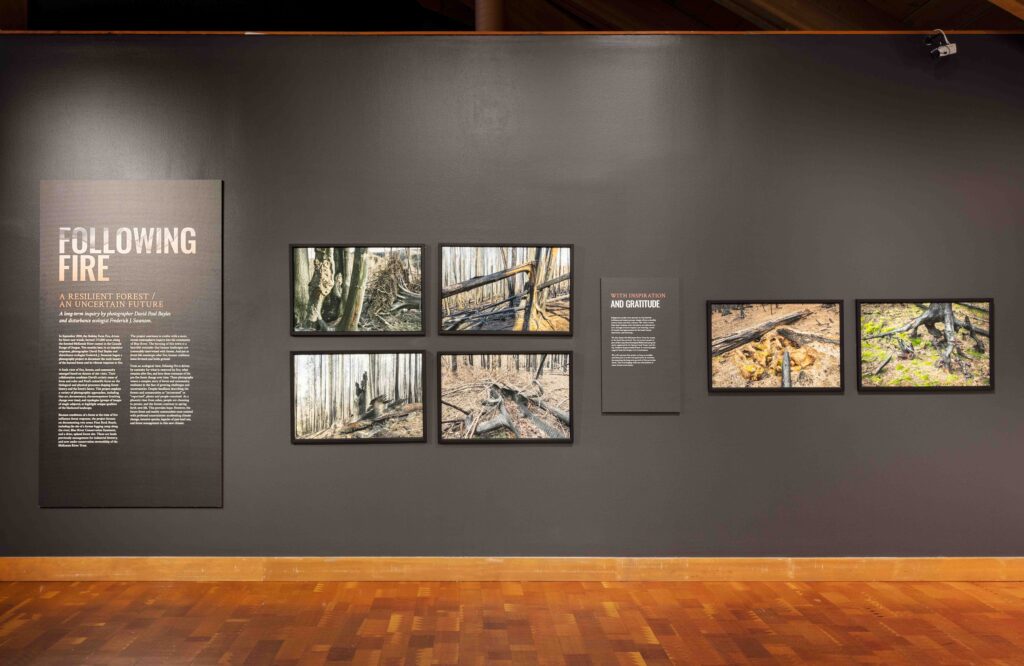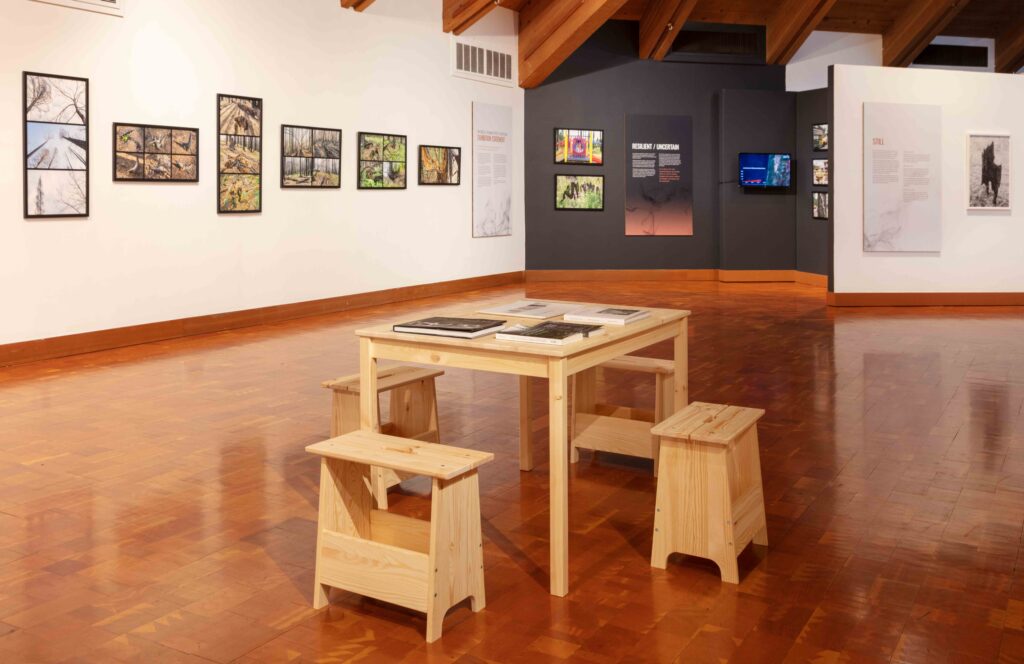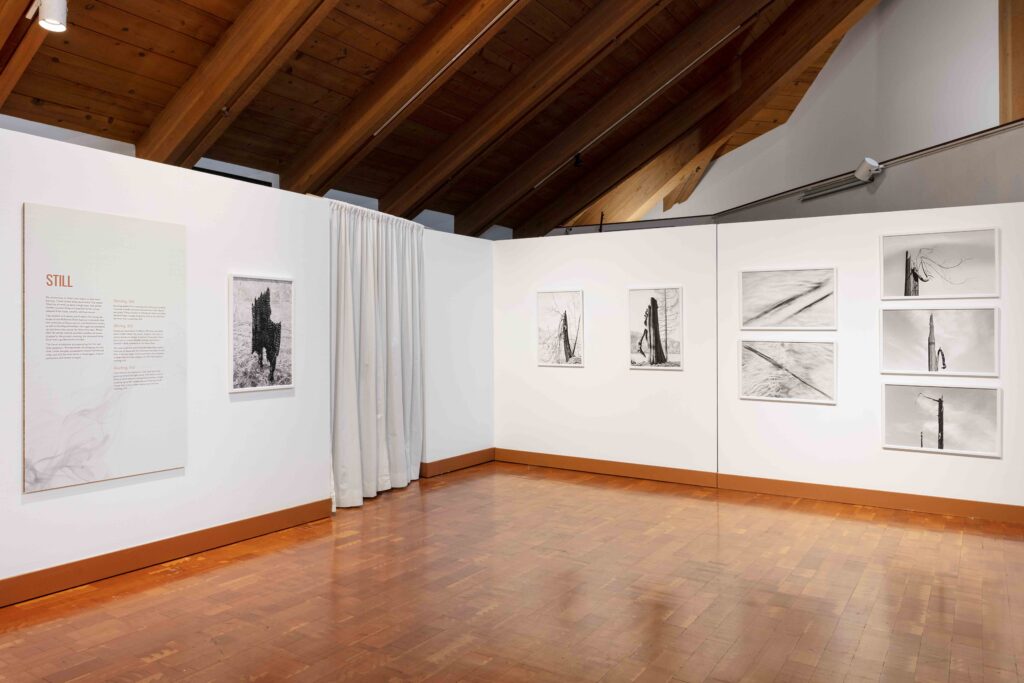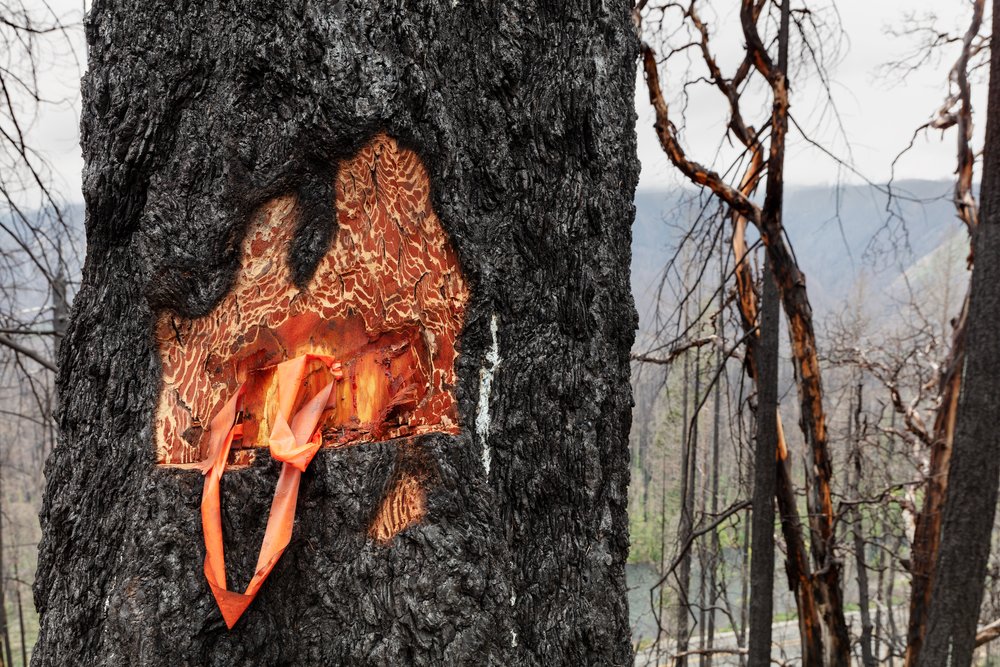
Featured Exhibition
November 1, 2024 – March 30, 2025 | Wed-Sun 11am-4pm | Included with Museum Admission
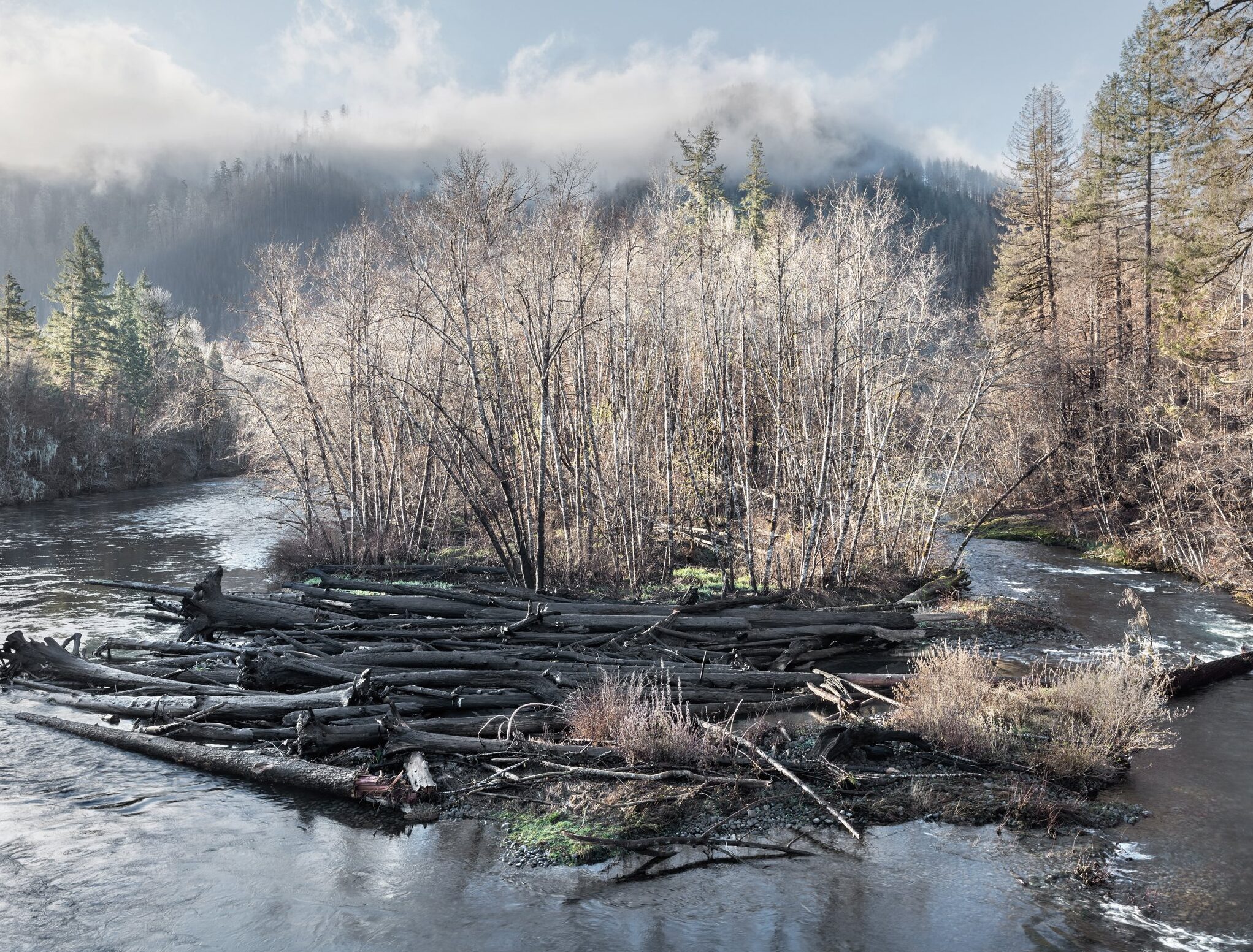
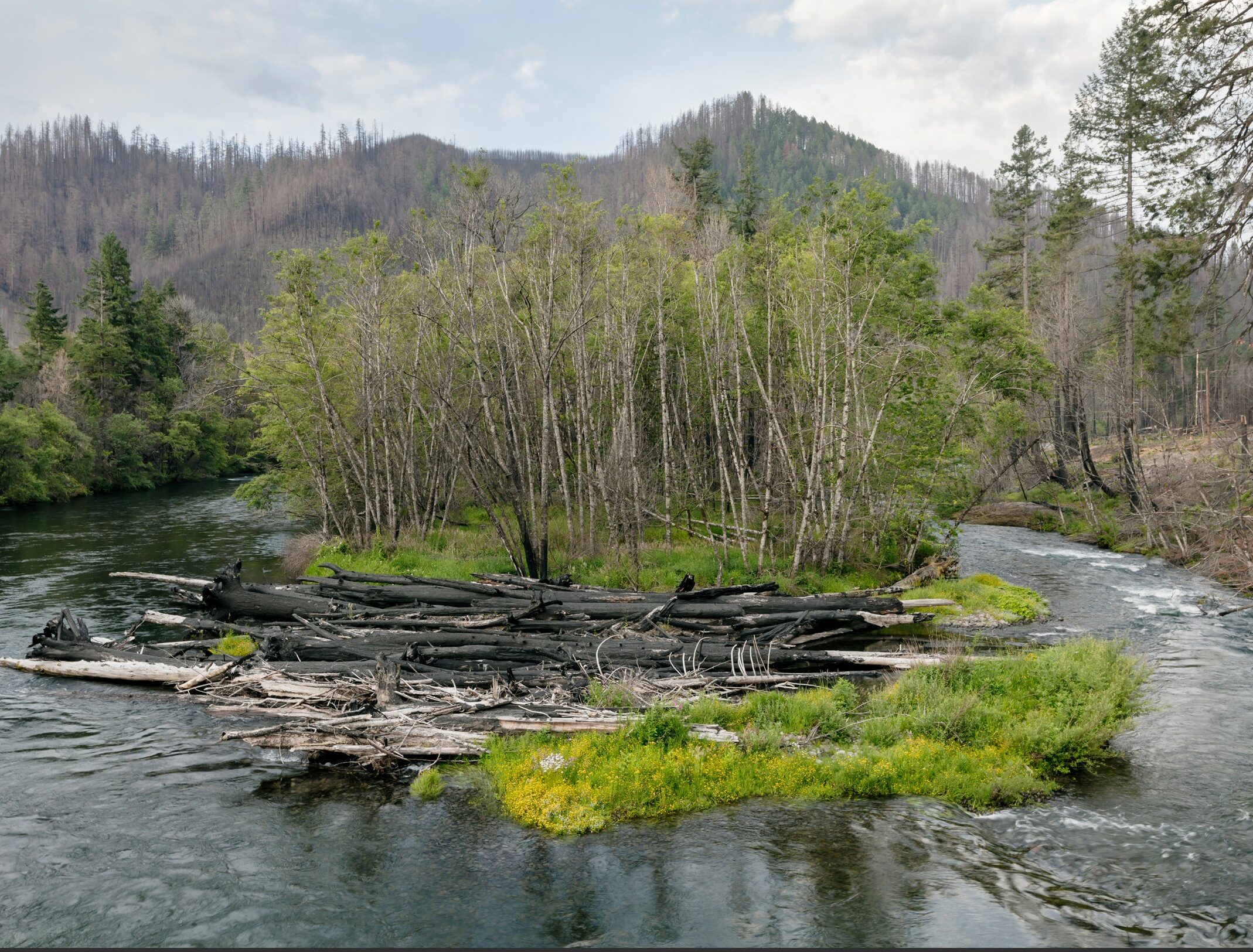
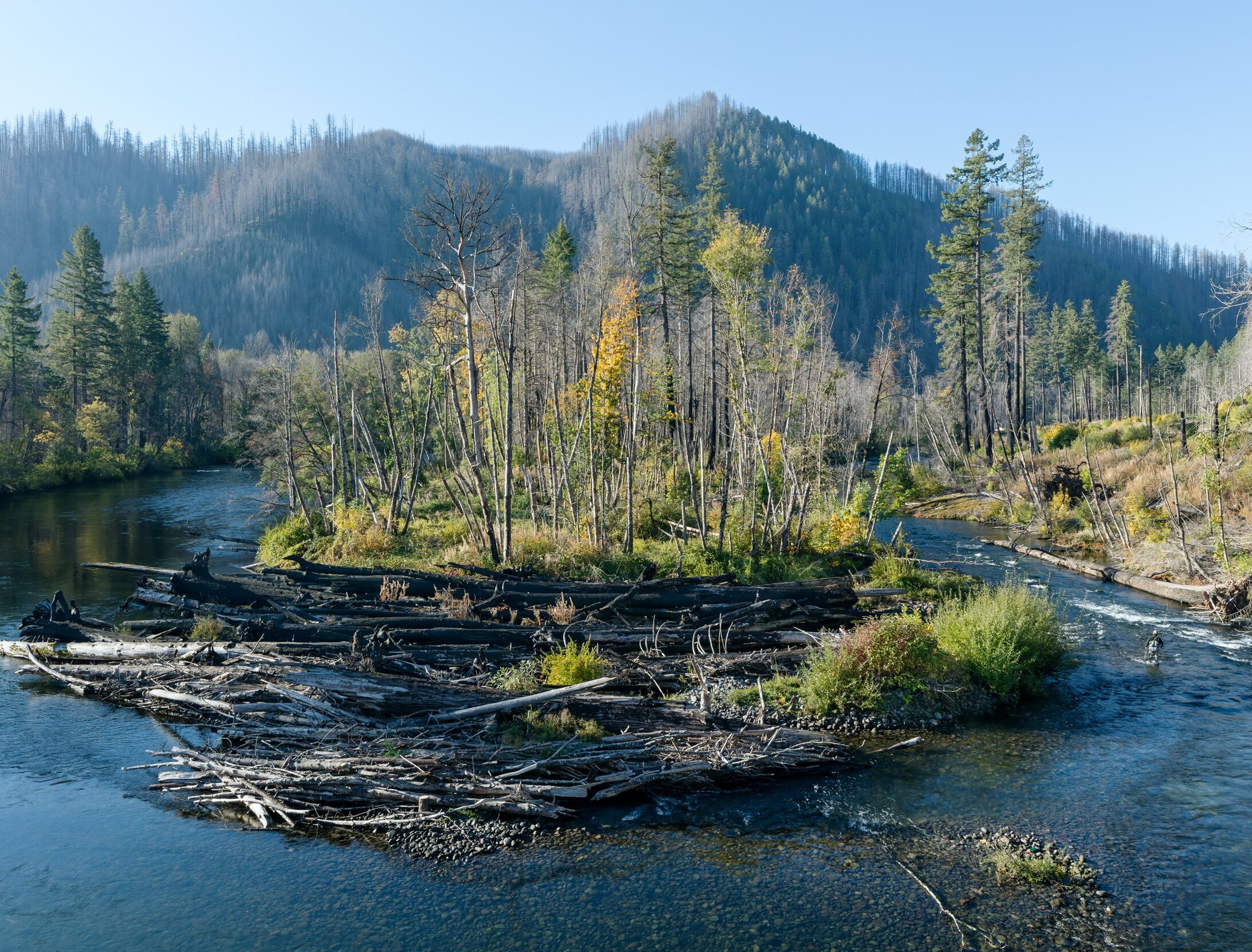
A long-term inquiry by photographer David Paul Bayles and disturbance ecologist Frederick J. Swanson
World Forestry Center presents Following Fire, A Resilient Forest / An Uncertain Future. In September 2020, the Holiday Farm Fire, driven by fierce east winds, burned 173,000 acres along the forested McKenzie River canyon in the Cascade Range of Oregon. Two months later, in an impulsive response, photographer David Paul Bayles and disturbance ecologist Frederick Swanson began a photography project to document the stark beauty of the burned forest and its vibrant response to fire.
A fresh view of fire, forests, and community emerged based on dozens of site visits.
Their collaboration combines David’s artistic sense of form and color and Fred’s scientific focus on the biological and physical processes shaping forest history and the forest’s future. This project employs a variety of photographic approaches, including fine art, documentary, chronosequences (tracking change over time), and typologies (groups of images of single subjects), to highlight the unique qualities of the blackened landscape.
Because conditions of a forest at the time of fire influence forest response, the project focuses on documenting two areas: Finn Rock Reach, including the site of a former logging camp along the river, Blue River Conservation Easement, and a drier, upland forest site. These are lands previously managed for industrial forestry and are now under the conservation stewardship of the McKenzie River Trust. The project continues to evolve with a more recent contemplative inquiry into the community of Blue River. The burning of this town is a heartfelt reminder that human landscapes are irrevocably intertwined with forests. And just as forest life reemerges after fire, human resilience leans forward and holds ground.
David & Fred joined FOX 12 Now’s Greg Nibler to discuss the exhibit. Check it out here.
The burning of this town is a heartfelt reminder that human landscapes are irrevocably intertwined with forests.
From an ecological view, Following Fire is driven by curiosity for what is removed by fire, what remains after fire, and how those remnants of the pre-fire forest change over time. These photographs weave a complex story of forest and community resilience in the face of growing challenges and uncertainties. Despite headlines describing the forests and communities as “incinerated” or “vaporized,” plants and people remained. As a phoenix rises from ashes, people choose to persist, and the forests continue to spring forth new life. This provides hope. However, the future forest and nearby communities must contend with profound uncertainties: accelerating climate change, invasive species, legacies of past land use, and forest management in this new climate.
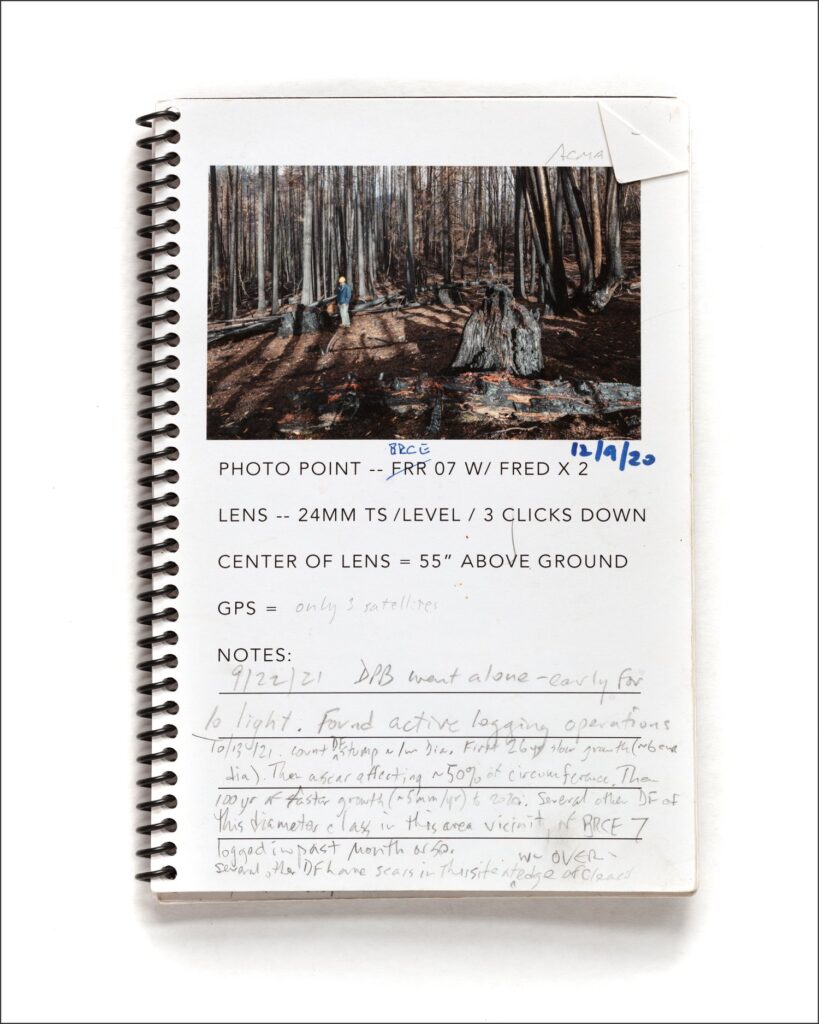
David and Fred will continue this project as long as possible, and then pass it to the next generation to continue documenting the long-term growth of this particular forest.
“This project was inspired by Kathleen Dean Moore’s writing for the Spring Creek Project. That is, to find new ways to understand and reimagine our relationship with the natural world. These big disturbance events really challenge us to understand the dynamism of nature. We need as many points of view out there as possible so society can sort through how we can move forward in a wildly changing world.” – Frederick J. Swanson
If you are unable to visit this exhibition in person, you can learn more about this project on the artist’s website, FollowingFire.com
World Forestry Center seeks to amplify the voices of community members who are deepening their understanding of wildfire. We proudly present the work of David Paul Bayles and Frederick Swanson, two individuals propelled by deep care for forest health, with sincere respect for intertwined communities. These two individuals are taking action, evoking an art-based research project that will live well past their lifetimes. We hope this exhibition will invite more people to engage in forest-based conversations, as wildfire affects everyone and everything.
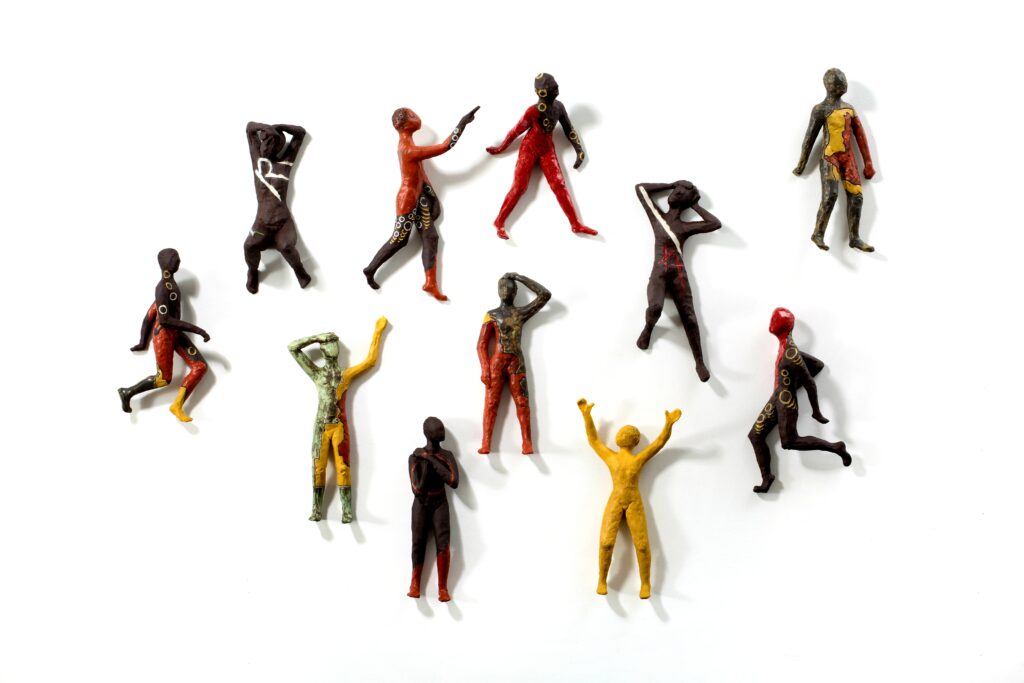
Also, don’t miss Fire Maps by artist Kate Simmons.
Adjacent to the Following Fire exhibition, this is an installation of ceramic figures informed by the Riverside Fire of Oregon that affected 138,054 acres of land along the Clackamas River and Mt. Hood National Forest in 2020. Each figure varies in scale and depicts unique gestures of shock and disbelief. The forms are molded from clay with immediacy to reflect the sudden and abrupt demand for people to evacuate their homes in response to the wildfire threat. The surface decoration of the figures is informed by satellite maps that tracked the progression of the fire and roadside evacuation markings left by authorities. The installation of these works explores how wildfire affects people individually and as a community.
Meet the Artists
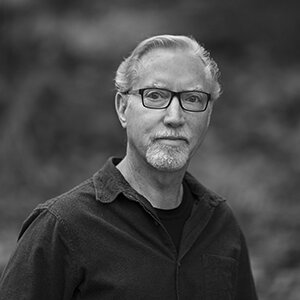
David Paul Bayles, photographer
David photographs landscapes where the needs of forests and human pursuits often collide, sometimes coexist, and occasionally find harmony.
Bayles’ deep connection with trees was forged in the mid-seventies while working as a logger in the Sierra Nevada mountains. A month before leaving the woods for photography school, David was chased down a steep hill by a large log. His instinctive, snap judgment saved him from being crushed by the rolling log, punctuating the four-year physical experience with a profoundly spiritual one. While at college in Santa Barbara, he embraced the environmental movement. These dual perspectives add an authentic and unique approach to his photographic projects.
His photographs have been published in Orion, Nature, Audubon, Terrain, Commonweal, Outside, The L.A. Times Sunday Magazine and others. Public collections include The Portland Art Museum, Jordan Schnitzer Museum of Art, Santa Barbara Art Museum, The Harry Ransom Center and others. He’s published two monographs, Urban Forest and Sap in Their Veins. The David Paul Bayles Photographic Archive was created in 2016 at The Bancroft Library at UC Berkeley to archive his life’s work. To view more of David’s work visit his main website davidpaulbayles.com
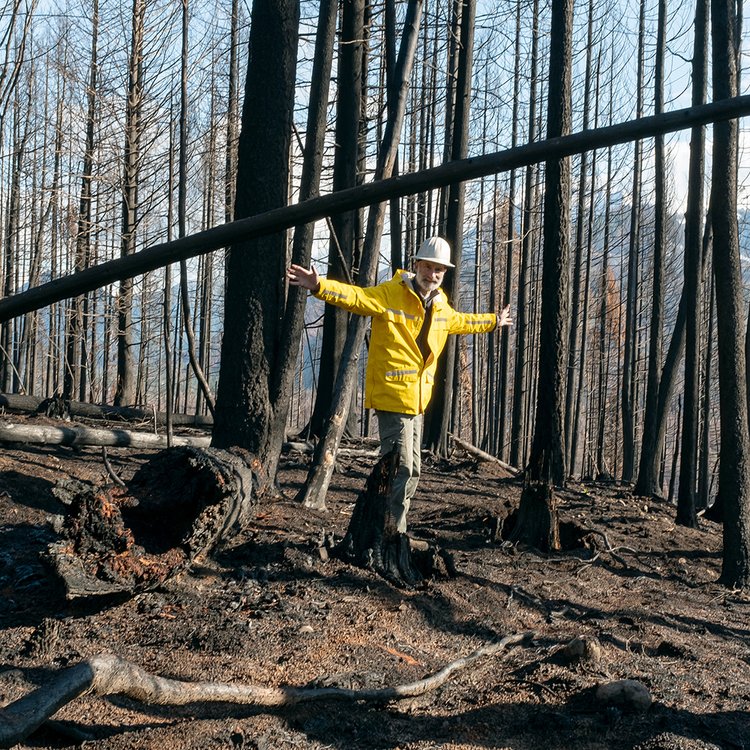
Fred J. Swanson, Research Geologist
Fred is a retired Research Geologist with the Pacific Northwest Research Station of the US Forest Service. Additionally, he ia a Senior Fellow with the Spring Creek Project for Ideas, Nature, and the Written Word; and lead scientist in the Long-Term Ecological Reflections program, based at the H.J. Andrews Experimental Forest in the Oregon Cascades.
The Reflections program facilitates writer and artist residencies in the ancient forest of the Andrews Forest and the volcanic eruption landscape of Mount St. Helens. These activities include 120+ writer and artist residencies at Andrews Forest since 2004. Trained as a geologist and specializing in the study of disturbance agents in forest ecosystems and watersheds (fire, flood, landslide, volcanic eruptions, clearcutting, forest roads) and in society, it has been natural to connect with human disturbance agents, such as poets and artists.
Relevant art-science books from these endeavors include Forest Under Story: Creative Inquiry in an Old-Growth Forest (2016, U Washington Press) and In the Blast Zone: Catastrophe and Renewal on Mount St. Helens (2008, Oregon State U Press).
